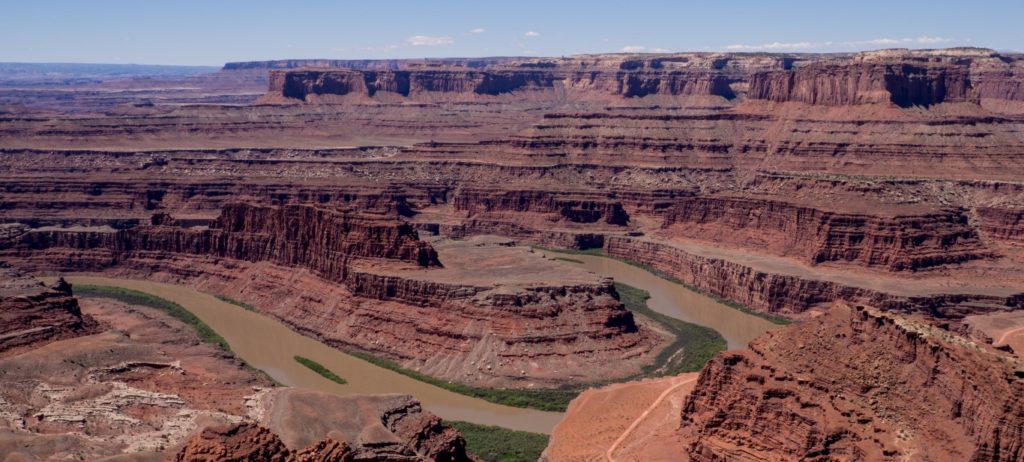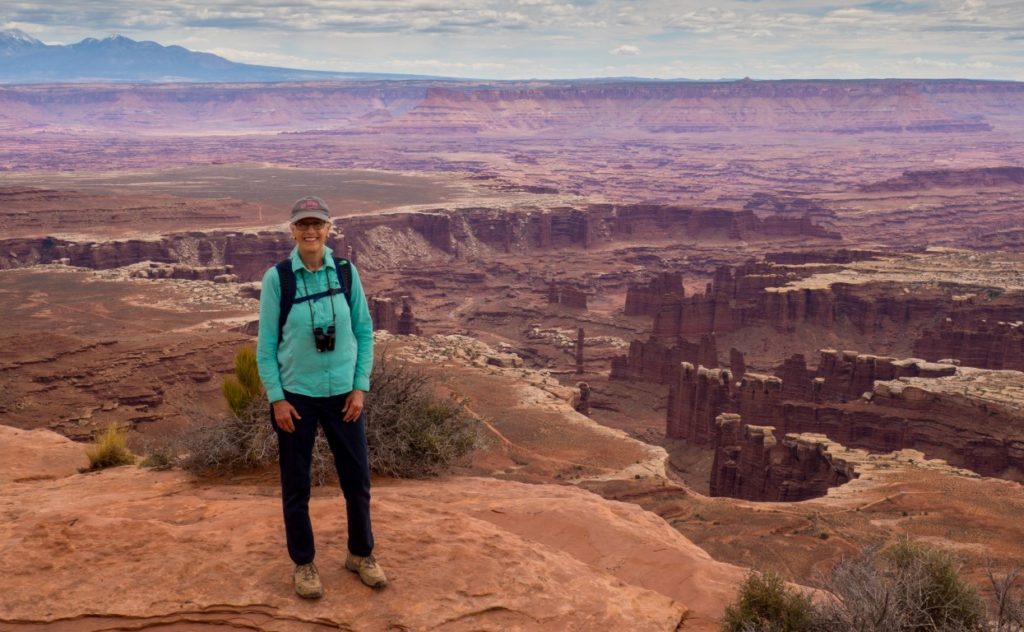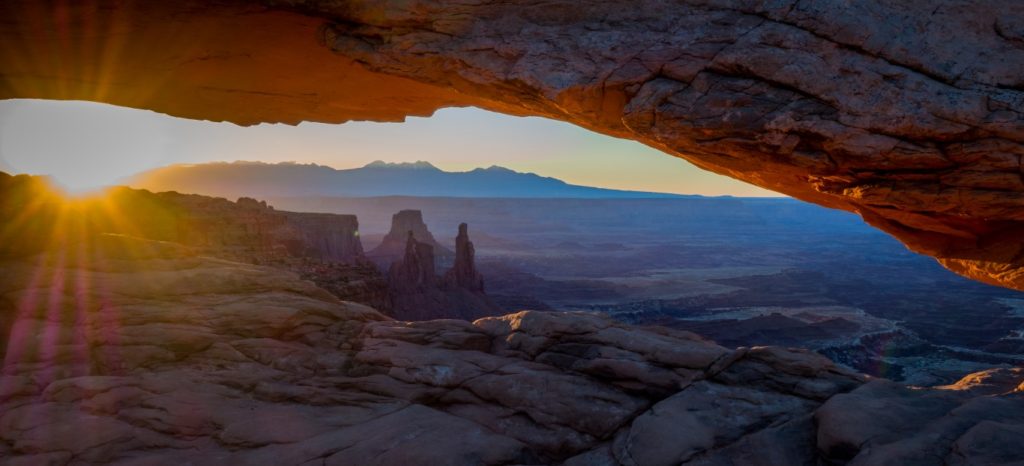The Islands in the Sky District of Canyonlands National Park is only 13 miles as the crow flies from Arches National Park, but it might as well be 1300 miles. It defies description how two places so close together can be so different. Whereas Arches whacks you in the face with towering, unlikely formations of rock that rise straight up from the surrounding terrain, Canyonlands overwhelms you with deep, unlikely canyons that drop straight down from the surrounding terrain. Arches is an area of specific, localized monuments to the forces of nature; Canyons is an area of vast, endless vistas that testify to the forces of nature. The two places are equal but opposite testaments to nature’s inexorable constructive and destructive forces relentlessly applied to the earth’s surface.
The Canyonlands plateau is an area within the Colorado plateau, the latter encompassing 130,000 square miles of land generally located in the four corners area of Colorado, Utah, Arizona, and New Mexico. While the Pacific and North American plates pushed against each other, one sliding over the other at about two inches per year, and crinkled up the surface of the earth to form the Rocky Mountains, that same movement actually lifted the four corners area straight up as a huge plateau. (I know, I know — how can one lift up a piece of rock 130,000 square miles big and tens of thousands of feet deep? That’s just one of an infinity of incomprehensible realities in this area.) Then, just as nature created the expansive, flat area, it began wearing it down. The top 4000 feet of the plateau has already been worn completely away by water and wind. Where rivers flow through the area, they wear it down even further. Here in Canyonlands, the river canyons are about 1400 feet deep.

We spent several days here, not nearly enough time, and did our usual activities: hikes, picnics, and ranger talks. As we were doing all that, completely enjoying everything about this place, we wondered whether this park would be a good place to bring young children. Definitely not. There are far too many precipitous drop-offs and even a moment of inattention could have tragic consequences, although in reality a child would hit a ledge about 400 feet down rather than dropping all the way to the canyon floor. Still, for most parents, that difference probably wouldn’t matter.


We also lucked out and stumbled into an evening “star party” hosted jointly by rangers from Arches, Canyonlands, and Dead Horse Point State Park. The rangers brought six telescopes, enough that the 50 or so people in attendance were not hurried at all. We saw Jupiter, including that “storm” (like a hurricane, I’m told) that’s been raging for 300 years, the “ring nebula” (the circle of dust and gas left over when a star exploded!), and (my favorite) a spiral galaxy. And, of course, because the skies are so dark and the air is so clear, we were treated to the sight of the Milky Way rising before us.
And I was able to get up at 3:00 a.m., again, actually for the third time in the past week, to travel off to a special photo location and snag a picture of sunrise at Mesa Arch. That shot is something of an icon for the park, and is on the bucket list of most serious photographers.

We ran out of time and did not get to do all of the hikes on the list of recommendations, and we didn’t get to see the other two units of the park at all. But still, this was a dramatic and unforgettable place.
Next stop, Capitol Reef National Park.
